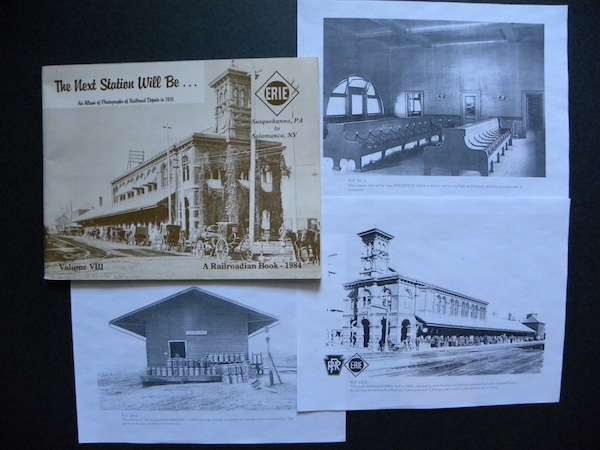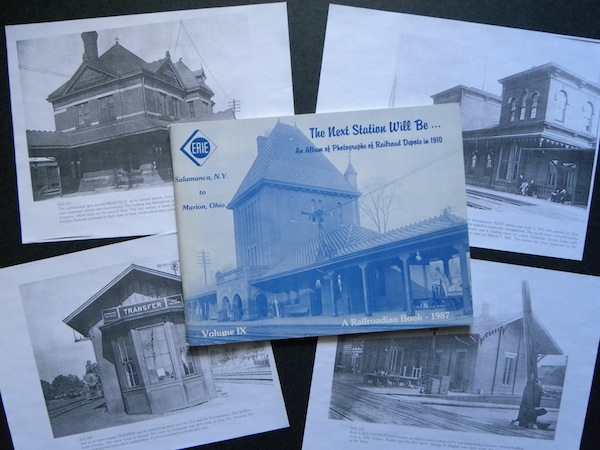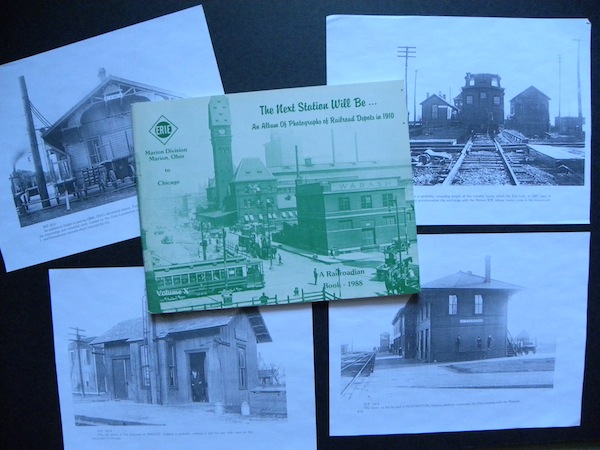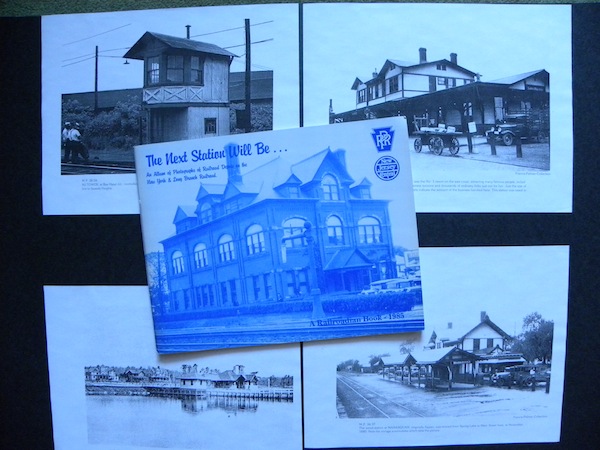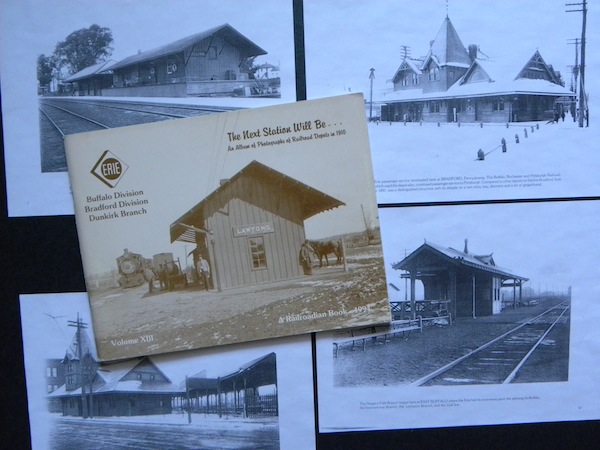
Fairbanks Feature: The Next Station Will Be . . . (the second in a series of three)
James D. Van Trump Library | Frank B. Fairbanks Transportation Archive | Fairbanks Features
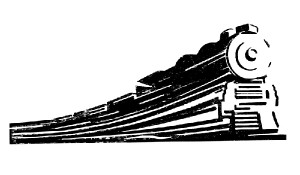 Showcasing a variety of materials located in the Frank B. Fairbanks Rail Transportation Archive
Showcasing a variety of materials located in the Frank B. Fairbanks Rail Transportation Archive
No. 16 Presentation
Fairbanks Feature: The Next Station Will Be . . . (the second in a series of three)
This feature in “A New Train of Thought” is the second in a three-part series highlighting the 13 soft-bound booklets of The Next Station Will Be . . . , published by The Railroadians of America, Inc. (For the first of the three articles, please read Fairbanks Feature 15.)
The glass plate negatives for these photographs were discovered in the 1960s, after having been forgotten since they were taken in the years 1909 to 1911. While many of the original 500 plates were lost, enough remain to give us this great record of rail history.
The set of 13 booklets gives rail maps of the major lines during the 1910s that used these stations. The sample pages of timetables that pertain to the stations are great finds for the early rail history researcher. Copies of the posters that were popular during these times for the rail lines seem to be modern in their presentation––and yet, the lines have been gone for 50 or more years.
Each of these booklets gives a short rail line history of the various lines that used the tracks for these stations. It is easy to get overwhelmed when reading about the buying and selling of smaller lines for the bigger lines and the constant court cases resulting between lines that wanted to prevent other lines from coming into existing areas. It’s a wonder the rail system functioned at all, given the long, ongoing court cases; the illegal deals; the lawyers who pitted themselves against each other; and the railroad robber barons who bought, sold, and merged lines with little regard for the train-riding public. Keeping a proper scorecard for the rail line name changes and mergers almost requires modern technology.
After seeing the following photographs from books 8 through 13, you’ll be encouraged to examine all the photographs in all 13 booklets. So much of the life of our nation in the early 1900s revolved around these simple railroad stations.
- Book 8––Elmira, NY; Almond, NY; Wellsville, NY
- Book 9––Meadville, PA.; Transfer, PA; Youngstown, Ohio; Kent, Ohio
- Book 10––Lima, Ohio; Magley, Indiana; Huntington, Indiana; Wilders, Indiana
- Book 11––Lambs Creek, PA; Greycourt, NY; Middletown, NY; Websters, NY; Blooming Grove, NY
- Book 12––HJ Tower at Bay Head Jct., NY; Long Branch, NY; Asbury Park-Ocean Grove, NY; Manasquan, NY
- Book 13––Bradford, PA; Niagara Falls, NY; East Buffalo, NY; Collins, NY
The Frank B. Fairbanks Rail Transportation Archive is open by appointment on Mondays, from 10:00 a.m. to 5:00 p.m. Use of the archive is free to PHLF members (one of the benefits!); non-members are assessed a $10 use fee.
The Archive is located on the fourth floor of The Landmarks Building at Station Square, in the offices of the Pittsburgh History & Landmarks Foundation.
To schedule an appointment, email the Librarian James Halttunen: James@phlf.org

